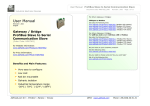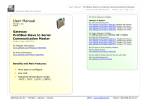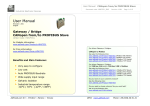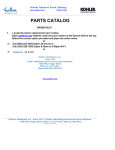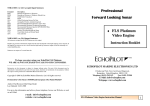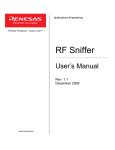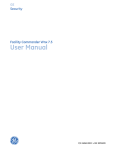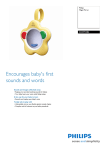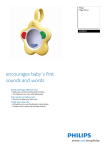Download July `10` - Corvette Window Indexing
Transcript
Flagler County Corvette Club — Newsletter Page 4 Technical Notes — July ‘10’ - Corvette Window Indexing This month’s article addresses another first for the Corvette, window indexing, a feature that many high-end cars have had for a while. Prior to the C6 generation Chevrolet used a compression system to seat the window against the upper gasket. Even with its removable roof panel, the C5 Corvette coupes had an integral frame around the window. To keep the wndow snuggly in place the design used compression seal. Unfortunately, this system was less than perfect and often lead to rain intrusion and wind Vic Natiello noise. At high speeds the aerodynamics created a differential pressure that would tend to pull the window away from the car’s interior. To prevent this Technical Committee —Chair situation from creating constant water and wind issues, Corvette engineers used “blow out clips” to keep the window from separating from the gasket. To the right, the blow out clip is shown as item 2 in the diagram from the Service manual. Below you can clearly see the plastic blow out clip on this C5 coupe. The primary reason Chevrolet went to the window indexing system in the new generation was to allow the engineers to get a complete weather seal around the top of the window. The C6 design allows for the upper window seal to completely encompass the top of the window glass. That, is the window actually goes into a groove in the gasket. Thus, the gasket holds the window in place and the need for blow out clips is eliminated. Because the pane actually goes into the groove, water cannot get in and wind noise is all but eliminated. However, this design has one drawback. The door cannot be opened or closed when the window is fully up. Obviously, after spending $50,000 plus on your sports car, GM did not want you to have to manually lower the window each time you got in or out. Clearly, raising or lowering the window from the exterior of the car would have really required some ingenuity, so GM incorporated window indexing. Whenever you open a door on the C6, the window will lower approximately an inch to allow the door to open. After the door is closed, the window returns to the full up position automatically. Continued on Page #5 Flagler County Corvette Club — Newsletter Page 5 Technical Notes — July ‘10’ - Corvette Window Indexing However, as with any high-tech system, glitches are always possible. The glitch in this system is that the mechanism gets “out of synch” and the window can remain slightly open after the door closes. This is especially true after a total electrical power interruption such as a battery change. But not to fear, this issue is addressed in your Corvette Owner’s Manual on page 87. I want to discuss one step shown above in further detail, that is step 3 of the Initialize procedure. If you’ll note, Chevrolet states to hold the switches in the up position for three seconds after the window has closed. I have seen two other sources that say 5 and 10 seconds. There should be no problem if you hold the switches a bit longer, just as long as it is at least three seconds. I have also seen a source that recommends that you accomplish this procedure on both windows even if only one window is out of sequence. Again, this can do no harm. However, another source I saw also recommended putting the window full down before you begin this procedure. As you can clearly see, GM does not make this distinction in step 2. That requirement is obviously not necessary. While we’re looking at the indexing discussion, I want to address a common “myth” associated with the system. Some C6 owners have been boasting that their car is so well built that window indexing was necessary to make it possible to close the door. Continued on Page #6 Flagler County Corvette Club — Newsletter Page 6 Technical Notes — July ‘10’ - Corvette Window Indexing Their argument was that if the window were full up, the door would have to be slammed to get it to close because the air pressure built up in the cabin would prevent the door from fully closing. Actually, this is nothing more than an “old wives tale.” Clearly, if the window stayed full up and you slammed the door, you could do some severe damage to the window or its internal track. The window would contact the upper gasket, which is not a compression gasket. Unlike the C5, it door would probably rebound back or if it did manage to get into the grove, would bend the windowpane and its internal track in the process. Chevrolet has already compensated for any backpressure caused when an external panel is closed. Here is a picture of a C6 Z06 with the right rear quarter panel removed. Note the flapper valve. That valve is there to vent excess pressure should it build up in the car whenever any cabin panel in closed. Otherwise, how else could you close just the hatch in a coupe or Z06 without leaving a door open? In closing, I can see C5 owner’s scratching their heads and wondering if over time, the compression system used in their coupes/Z06s would be subject to fatigue. That is, after so many times of closing the doors, would the window and its internal frame be slightly bent thus allowing wind and rain intrusion, especially at high speeds. Guess you’ll have to replace the whole window assembly to get it to seal properly again, right? Well, maybe not. But wait, that will have to be discussed in a future article. No use telling you guys everything at once or I’d have nothing to talk about in future Tech articles. See you at Woody’s.




